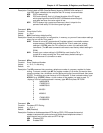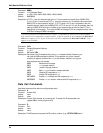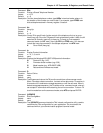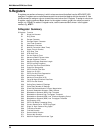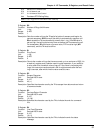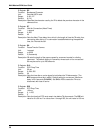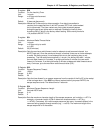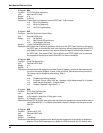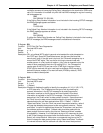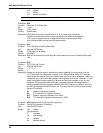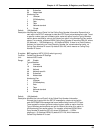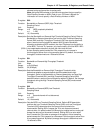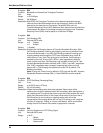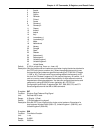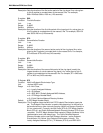
61
Chapter 4 - AT Commands, S-Registers, and Result Codes
not define a means of conveying Calling Party information to the terminal for ISDN voice
calls. CLI information is included only with the first RING message for a given incoming
call and appears as:
RING
FM: 5552000 TO: 5551000
If the Calling Party Number information is not included in the incoming SETUP message,
the RING message appears as follows:
RING
TO: 5551000
If the Called Party Number information is not included in the incoming SETUP message,
the RING message appears as follows:
RING
FM: 5552000
If neither the Called Party Number nor Calling Party Number is included in the incoming
SETUP message, the RING message contains no additional information.
S-Register: S51
Function: POTS Port Dial Tone Suppression
Unit: Decimal ASCII code
Range: n = 0, 1
Default: 0
Description:S51 only affects NET3 switch type and voice/modem/fax calls attempted on
the POTS port. Some NET3 switches have a
hot
dial tone (dial tone that
sounds very loud). If the dial tone is too loud, the TA cannot recognize any or
most of the DTMF digits. This is a similar to trying to communicate with
another person in a very loud train station—your voice is drowned out by the
noise of other people and the trains. By setting S51=1, the TA keeps the
receive gain of the POTS port low until a DTMF digit is received. After a
DTMF digit is received, the gain is set back to whatever !RXG was set to
before the phone, modem, or fax went off-hook (!RXG6 by default). !RXG
does not need to be adjusted.
S-Register: S52
Function: Auto-Protocol Detection
Unit: Decimal ASCII code
Range: 0, 1, or 2
Default: 1 (Detect)
Description:Enables or disables the ability to identify the reception of V.110, V.120, X.75,
or PPP data calls. The TA determines the type of call by checking for
protocol information in the SETUP message or by matching protocol
information received on the B-channel once connected if no protocol
information is available in the SETUP message. Once the protocol is
determined, the TA will switch its data protocol to match. Upon disconnect
the TA will revert its data protocol selection back to the protocol that was
selected before the call was received when S52=1 “Detect”. If S52=2
“Detect and Select”, then the TA will not revert the protocol selection, rather it
will keep the detected data protocol as the new protocol selection. “Detect
and Select” is useful for applications where the TA receives a call and then
the software performs callback. Callback calls should be made with the
same protocol that was used by the client so “Detect and Select” enables
this possibility. However, if an initialization string or &Fn command is given
to the TA that changes the protocol after the disconnection, then “Detect and
Select” will not be effective. Make sure no commands are given to the TA
that will change the data protocol when using “Detect and Select” if callback
is involved to ensure that the callback call uses the correct data protocol.



